
Carbons Cruical Role

The relationship between carbon and the ocean and land is multifaceted, involving chemical, biological, and physical processes that together form a dynamic and essential component of the Earth’s carbon cycle.
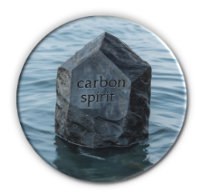
Carbonature is a holistic teaching ethos centered on the concepts and realities of carbon and life. We might nickname this as "IT," a term that represents everything carbon-related in the known universe and beyond. "IT" encompasses whatever you encounter within the world, including the universe or your broad community.
An awareness, based around carbon, integrates everything, giving us insight into "ITs" molecular structures, water energy, nature, and life force as a shared identity, Nature. This understanding makes it easier to grasp and apply these simple yet possibly infinite perceptions.
Carbon plays a critical role in the ocean and water systems through various processes that form part of the global carbon cycle. Here’s a breakdown of how carbon interacts with the ocean and water:
1. Carbon Dioxide Absorption
The ocean acts as a significant sink for carbon dioxide (CO₂) from the atmosphere. CO₂ is absorbed at the ocean’s surface, where it dissolves into the water. This process helps regulate atmospheric CO₂ levels and mitigate the effects of climate change.
2. Formation of Carbonate Compounds
Once in the ocean, CO₂ undergoes chemical reactions to form carbonic acid (H₂CO₃), bicarbonate (HCO₃⁻), and carbonate (CO₃²⁻) ions. These reactions are essential for the ocean’s buffering capacity, which helps maintain a stable pH level.
1. Carbon Dioxide Absorption
The ocean acts as a significant sink for carbon dioxide (CO₂) from the atmosphere. CO₂ is absorbed at the ocean’s surface, where it dissolves into the water. This process helps regulate atmospheric CO₂ levels and mitigate the effects of climate change.
2. Formation of Carbonate Compounds
Once in the ocean, CO₂ undergoes chemical reactions to form carbonic acid (H₂CO₃), bicarbonate (HCO₃⁻), and carbonate (CO₃²⁻) ions. These reactions are essential for the ocean’s buffering capacity, which helps maintain a stable pH level.
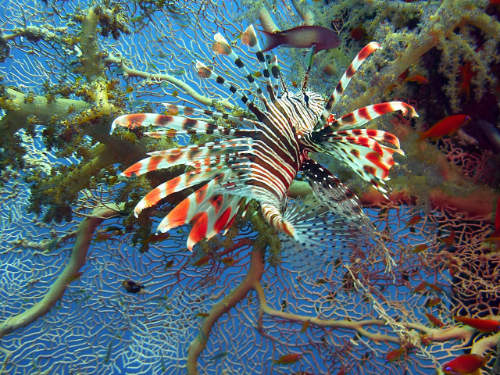
Photo: Joa Kant
3. Biological Processes
Marine organisms, such as phytoplankton, play a crucial role in the carbon cycle. Through photosynthesis, phytoplankton absorb CO₂ and convert it into organic carbon, which forms the basis of the marine food web. When these organisms die, they sink, transporting carbon to deeper ocean layers.
4. Carbonate Sedimentation
Marine organisms like corals, mollusks, and some plankton use carbonate ions to build their calcium carbonate (CaCO₃) shells and skeletons. When these organisms die, their remains contribute to sediment formation on the ocean floor, effectively sequestering carbon for long periods.
5. Ocean Acidification
The absorption of excessive CO₂ by the ocean leads to ocean acidification, a process that decreases the pH of seawater. This can negatively impact marine life, particularly organisms that rely on calcium carbonate for their shells and skeletons.
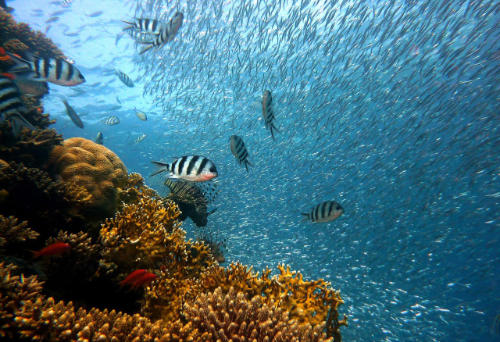
Photo: Joa Kant
6. Deep Ocean Carbon Storage
The ocean’s biological pump and physical processes transport carbon from the surface to the deep ocean. The deep ocean stores a significant amount of carbon, which can remain there for centuries or longer, playing a vital role in long-term carbon sequestration.
7. Hydrological Cycle Interactions
Carbon in the form of dissolved inorganic carbon (DIC) and organic carbon also moves through freshwater systems (rivers, lakes, and wetlands) before reaching the ocean. These freshwater systems act as pathways for carbon transport and transformation.
8. Coastal Ecosystems
Mangroves, salt marshes, and seagrasses (often referred to as "blue carbon" ecosystems) are highly effective at capturing and storing carbon. They sequester carbon both in their biomass and in the sediments below them, playing a crucial role in mitigating climate change.
This relationship helps regulate atmospheric CO₂ levels, supports marine life, and contributes to long-term carbon storage, although it also faces challenges like ocean acidification that threaten its balance.
The ocean’s biological pump and physical processes transport carbon from the surface to the deep ocean. The deep ocean stores a significant amount of carbon, which can remain there for centuries or longer, playing a vital role in long-term carbon sequestration.
7. Hydrological Cycle Interactions
Carbon in the form of dissolved inorganic carbon (DIC) and organic carbon also moves through freshwater systems (rivers, lakes, and wetlands) before reaching the ocean. These freshwater systems act as pathways for carbon transport and transformation.
8. Coastal Ecosystems
Mangroves, salt marshes, and seagrasses (often referred to as "blue carbon" ecosystems) are highly effective at capturing and storing carbon. They sequester carbon both in their biomass and in the sediments below them, playing a crucial role in mitigating climate change.
This relationship helps regulate atmospheric CO₂ levels, supports marine life, and contributes to long-term carbon storage, although it also faces challenges like ocean acidification that threaten its balance.
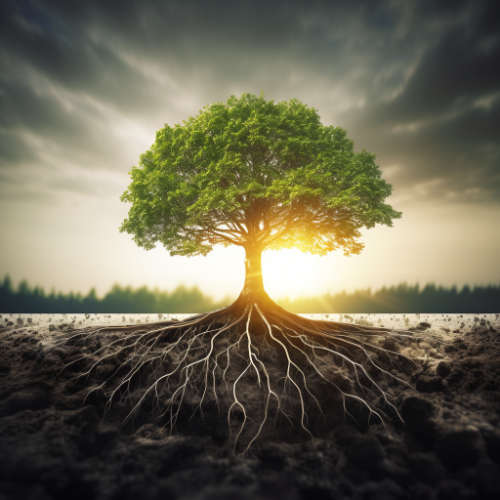
Carbon is essential for the growth and survival of trees and plants, and they play a crucial role in the global carbon cycle:
1. Carbon fixation: Trees and plants absorb carbon dioxide from the atmosphere during photosynthesis, a process in which they use sunlight to convert carbon dioxide and water into glucose (a simple sugar) and oxygen. This process is vital for producing the organic compounds that form the basis of plant structure and function.
2. Biomass: Carbon is a major component of plant biomass, which includes roots, stems, leaves, and other plant tissues. As trees and plants grow, they accumulate carbon in their biomass.
3. Storage: Trees and plants act as carbon sinks by storing carbon in their biomass and in the soil. Forests, in particular, are significant carbon sinks, storing large amounts of carbon over long periods.
1. Carbon fixation: Trees and plants absorb carbon dioxide from the atmosphere during photosynthesis, a process in which they use sunlight to convert carbon dioxide and water into glucose (a simple sugar) and oxygen. This process is vital for producing the organic compounds that form the basis of plant structure and function.
2. Biomass: Carbon is a major component of plant biomass, which includes roots, stems, leaves, and other plant tissues. As trees and plants grow, they accumulate carbon in their biomass.
3. Storage: Trees and plants act as carbon sinks by storing carbon in their biomass and in the soil. Forests, in particular, are significant carbon sinks, storing large amounts of carbon over long periods.
Trees are water pumps, the larger the tree the more water they
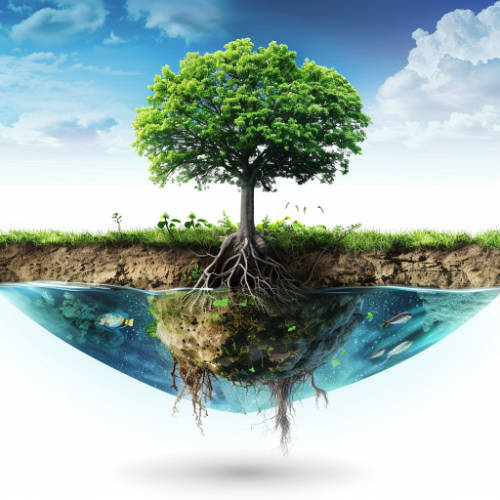
4. Carbon cycling: Through processes like respiration, decomposition, and combustion, carbon is continually cycled between trees, plants, soil, and the atmosphere. This cycling maintains the balance of carbon in the Earth's ecosystems.
5. Ecosystem services: Trees and plants provide essential ecosystem services that are beneficial for humans and other organisms. These include carbon sequestration (the removal and storage of carbon from the atmosphere), regulation of the climate, soil stabilisation, water purification, and habitat for biodiversity.
The information we provide on this site is meant to inspire you to consider exploring the vast amount of knowledge which is growing daily as Science and Environmental Studies continues to unlock the mysteries that surround us and define our Carbonature. Please consider us as a starting point to further your investigation, there is so, so much more to get into and realise.
5. Ecosystem services: Trees and plants provide essential ecosystem services that are beneficial for humans and other organisms. These include carbon sequestration (the removal and storage of carbon from the atmosphere), regulation of the climate, soil stabilisation, water purification, and habitat for biodiversity.
The information we provide on this site is meant to inspire you to consider exploring the vast amount of knowledge which is growing daily as Science and Environmental Studies continues to unlock the mysteries that surround us and define our Carbonature. Please consider us as a starting point to further your investigation, there is so, so much more to get into and realise.


